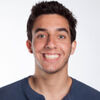How late is too late to start archery?
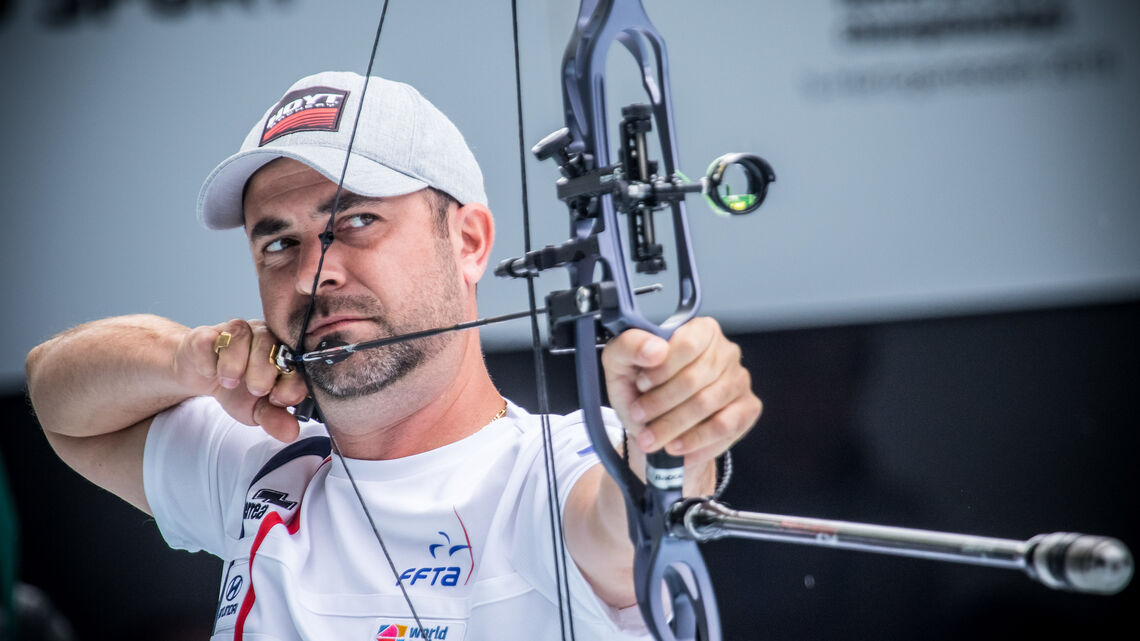
Ella Gibson was 16 years old when she finally accepted reality. Her youth had passed her by. She had regrettably reached middle age.
That was the prognosis given by a local club coach in Great Britain when Gibson attempted to try her hand at the recurve discipline. Archers must start young – really young – if they wish to achieve recurve success, the coach said.
Gibson had missed the window to develop the alignment in her shoulders required to shoot recurve effectively. If a geriatric like Gibson wanted to compete with the best, compound was the only remaining option.
“A bit rude, perhaps,” Gibson recalls thinking of her coach’s analysis. “I was only 16. How could I be middle-aged?”
Yet Gibson, now 21 years old and the 14th-ranked compound woman in the world, had no grounds to appeal the determination. Never mind that plenty of recurve archers, including Great Britain’s Sarah Bettles, are able to reach the Olympics, despite beginning the sport in their 20s.
Archery might be kinder to the ageing process than most sports, but it can still prove difficult to penetrate for those who arrive at the sport later in life.
“Since then, our recurve coach here at GB. has said that’s rubbish, and it’s kind of been a joke that he wants me to start recurve and he’ll steal me away one day,” said Gibson, who went on to affirm her love for the compound discipline.
“It didn’t hurt that three months after starting compound I broke national records,” she added. “So that was kind of like, okay, yeah, I believe you.”
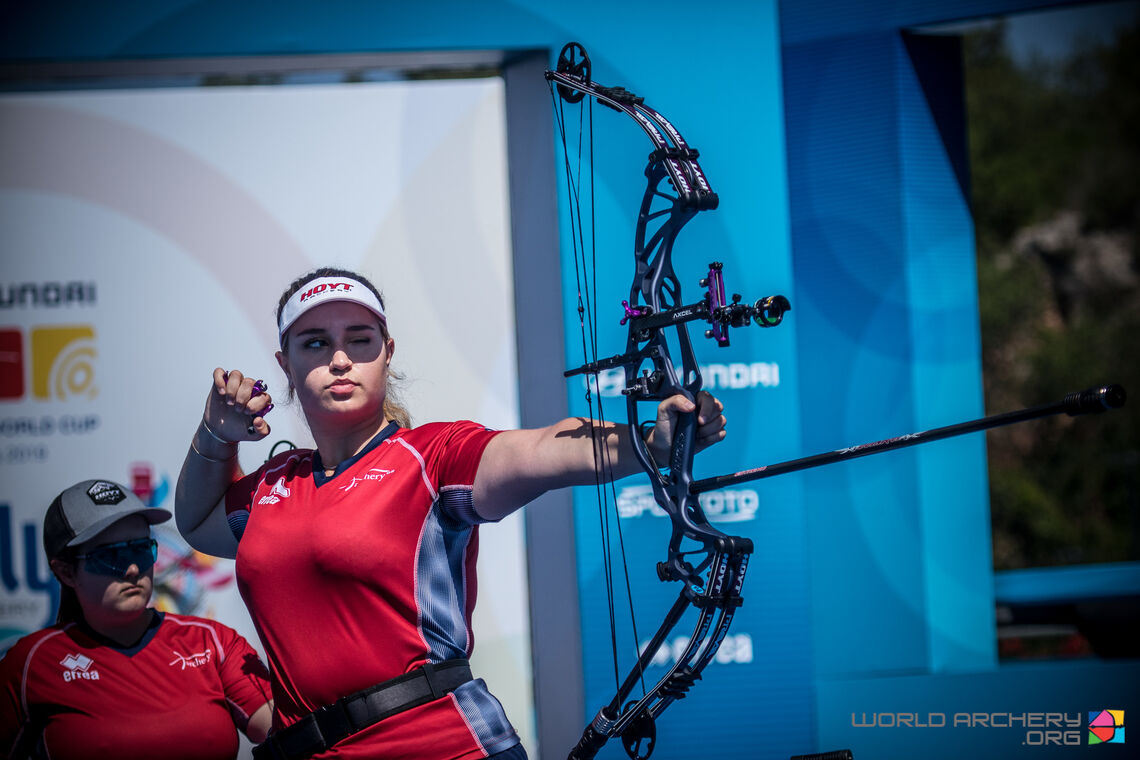
For many latecomers, however, a more circuitous route can yield a bounty of archery success.
A world number one ranking and a pair of Hyundai Archery World Cup Final titles would have been difficult to imagine for Sergio Pagni when he was Gibson’s age. The compound man from Italy did not pick up a bow in earnest until he was in college, and he was nearly 30 when he made his international debut in 2008.
Unlike wunderkind like An San and Mete Gazoz – who won individual gold medals in Tokyo at the ages of 20 and 22 years old, respectively – and recent compound world champions Nico Wiener (24) and Sara Lopez (26), Pagni practised the sport without the pretence of international glory.
“I started to practise a little with my father after the first year of university because I was playing basketball until I was in high school,” said Pagni, who gravitated toward the compound bowstyle because of his interests as an engineer.
“A family friend was doing it, and they said, come on, just try it to spend some evenings with family, and I said okay. That’s why I started, and that’s why I started so old.”
But Pagni, now 43, claims that postponing his introduction to the sport worked in his favour. Launching into the sport as a child, rather than as a hobbyist in college, would not have necessarily accelerated his development, he said.
By focusing on growing in other areas of his life first, he was incidentally laying the foundation for archery success to come.
“Sometimes, I feel that starting older means starting better,” Pagni said. “A lot of young guys have no comprehension of what it means to compete. They may be winning, but they are not focusing on what it means to build habits successfully.”
“Then they grow and they start to feel that, but it’s too late. There are 1000s of archers back home who are not shooting anymore because they are not able to adapt to this big change.”
Pagni saw results quickly, building a life off of the back of his newfound competitive success.
One of just a handful of archers to have been to at least 50 stages of the Hyundai Archery World Cup, Pagni was also the first archer to win back-to-back circuit finals, in 2009 and 2010.
“I often wonder why I was able to improve so easily,” he said. “Physically, I know it should be difficult, but very early I was always solid and able to shoot and make technical changes after every single arrow.”
“Sometimes as a coach, you ask some archers to, you know, turn your elbow a certain way,” he continued, “and it takes them three weeks to make this change, but I was able to make the adjustment with the next arrow and make the change very quickly.”
The perspective that comes with age has also allowed Pagni to make up for any lost time, he said.
The difference is especially noticeable during competitions. When the pressure is high, the elder archer is able to remain composed when other, younger athletes might unfurl.
“When you’re already grown and then you start, as I did, your mental thoughts are already solid and you don’t have to worry about these kinds of things,” he said. “Starting with this kind of mentality is completely different.”
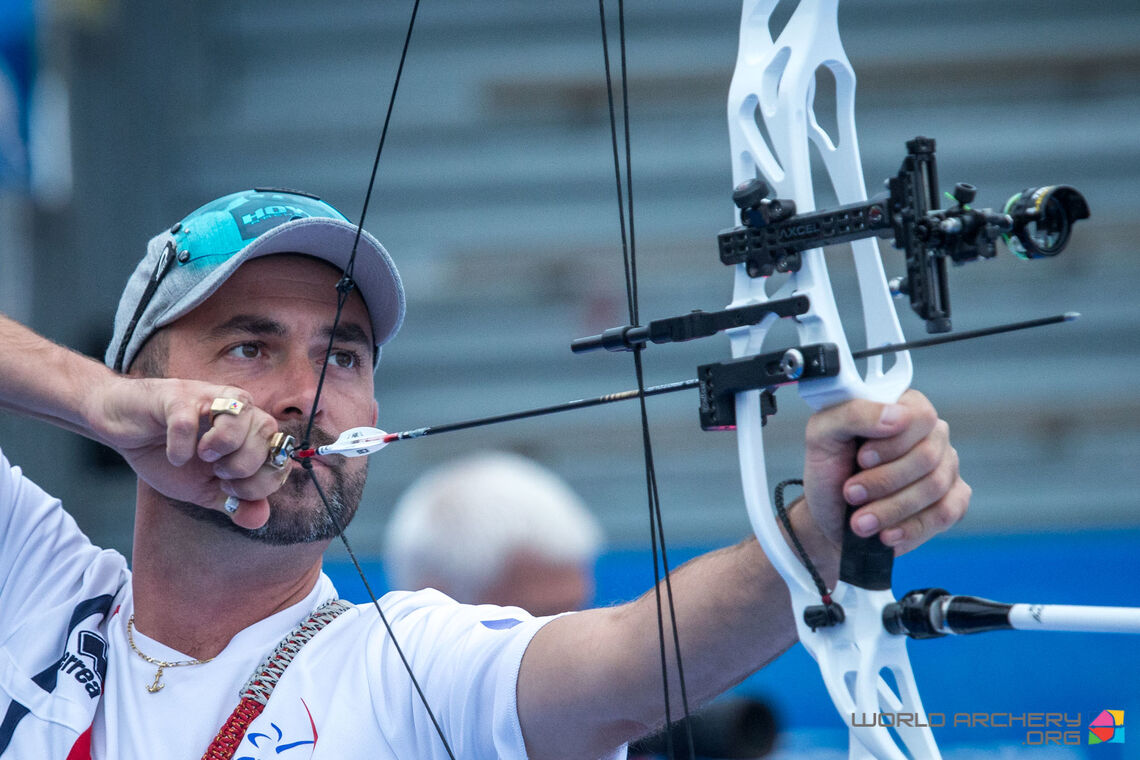
Participating in athletics well into adulthood has also delayed the ageing process, compound man Pierre-Julien Deloche said.
The Frenchman initially began shooting at nine years old, putting away his bow three years later to focus on his studies and an eventual career in the navy. It took over a decade for Deloche to finally return to the sport, making his international debut at 25 years old in 2007.
Like Pagni, Deloche juggled his duties as a well-rounded person skillfully, fulfilling his obligations while quickly ascending to the top of the sport. More rewarding than gold medals and world number rankings, however, has been the camaraderie gained by participating on the international circuit.
“I prefer to have fun in my sports, and I felt that there were a lot of good people and the funniest people on the compound side of things,” said Deloche, now 39 years old, who rekindled his love for the sport while he was still enlisted in the navy.
“After work, I always went to practise archery because it was fun – because it’s like a breeze after a long day,” he continued. “It made me happy to practice and shoot without any results in mind. Just throwing arrows. I wasn’t always hitting the target.”
This time, though, the timing was right. PJ stuck with the sport, continuing to practise with a competitive club team that identified his potential and invited him to enter high-level competitions. By his third year, he was on the French national team, and he’s been a member ever since.
“The progress was incredible,” Deloche said. “I felt pressure, but the pressure was not so high because it was like travelling with friends.”
“Even today, if I have an equipment issue, I know that everybody in the compound team from every country will find a way to help me. I’m sure about that,” he said. “If there is any problem, they will find a way to help me so I can shoot the best I can.”
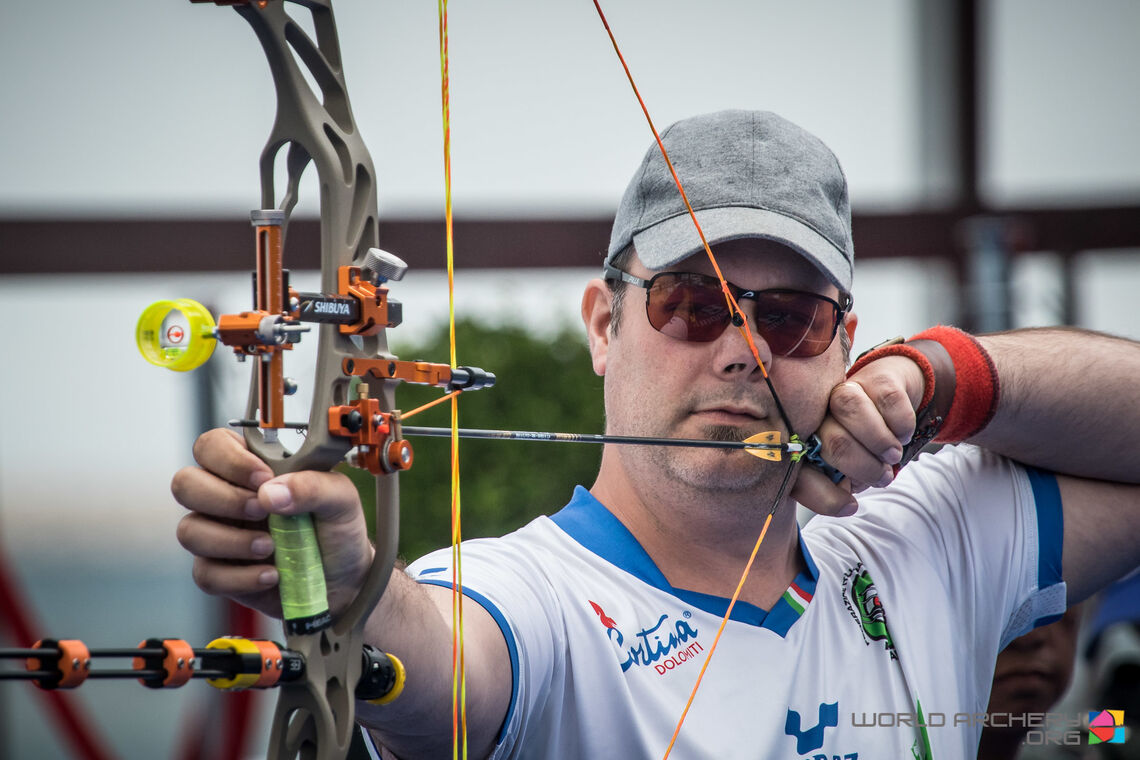
Both Deloche and Pagni rejected the notion that they had lost anything by missing early opportunities for growth. They agreed that their respective archery careers had come along at the right time in their life.
If anything, arriving to the sport ‘late’ has been invigorating, serving as an antidote for the tedium of adult life and as a rebuttal against the notion that unearthing new interests is a solely youthful pursuit.
“It’s strange to think that one decision can massively change the whole of your life,” said Gibson, who was introduced to archery in secondary school.
“If I decided not to go to that after school club, what a different life I would have and all the people I wouldn’t know. I’d probably be studying psychology in university, rather than shooting a bow on a field every day. It’s kind of wild.”
Reflecting on his life, Pagni was grateful for the circuitous path his career had taken.
“Archery changed my life,” said Pagni, who likes to say he met his wife, fellow archer Pia Lionetti, on the shooting line.
“My daughter is in this world now because I was a shooter. If you think back on how I felt about archery when I first started and what it means to me now, the answer is completely different.”
